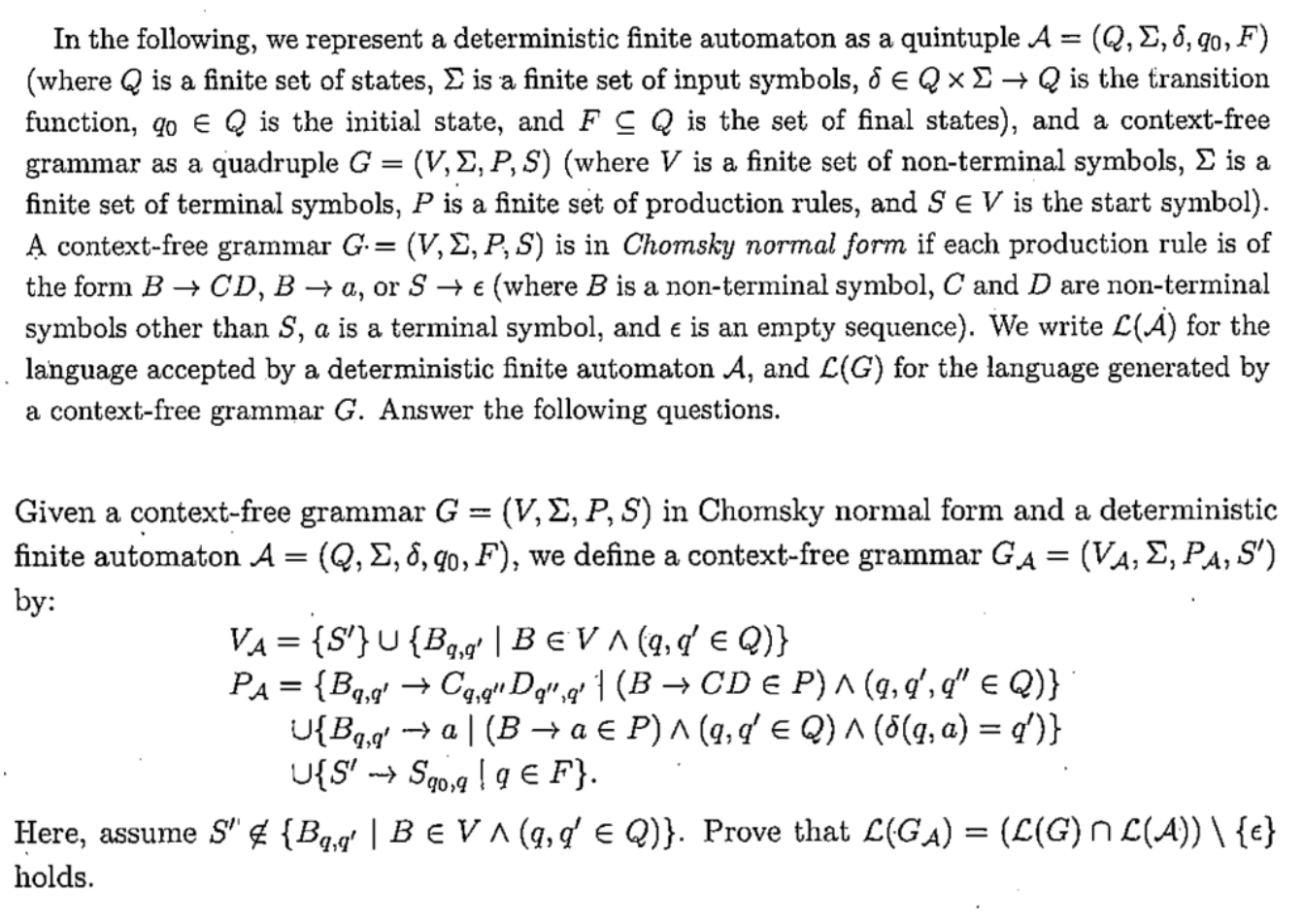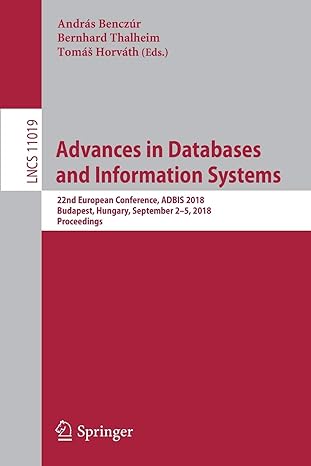
In the following, we represent a deterministic finite automaton as a quintuple A = (Q, 2,8,90,F) (where Q is a finite set of states, I is a finite set of input symbols, de Qx + Q is the transition function, go e Q is the initial state, and F C Q is the set of final states), and a context-free grammar as a quadruple G = (V, E, P, S) (where V is a finite set of non-terminal symbols, 2 is a finite set of terminal symbols, P is a finite set of production rules, and SE V is the start symbol). A context-free grammar G:= (V, E, P, S) is in Chomsky normal form if each production rule is of the form B+CD, Ba, or S + (where B is a non-terminal symbol, C and D are non-terminal symbols other than S, a is a terminal symbol, and e is an empty sequence). We write L(A) for the language accepted by a deterministic finite automaton A, and L(G) for the language generated by a context-free grammar G. Answer the following questions. Given a context-free grammar G = (V, E, P, S) in Chomsky normal form and a deterministic finite automaton A= (Q, 2, 8,40,F), we define a context-free grammar GA= (VA, E, PA, S') by: VA= {S} U{Bqg|BEVA(9,07 Q)} PA= {Bq,g' +Cq,g"Da", 1 (B CDEP)^(9,4', q" E Q)} U{B9,9" => a[(B+ a P)^(9,d' EQ)^(5(q, a) = q')} U{S' > 590,! 9 F}. Here, assume S" {Bqg' | BEVA(9,00 EQ)}. Prove that L(GA) = (L(G) N L(A)) \ {e} holds. In the following, we represent a deterministic finite automaton as a quintuple A = (Q, 2,8,90,F) (where Q is a finite set of states, I is a finite set of input symbols, de Qx + Q is the transition function, go e Q is the initial state, and F C Q is the set of final states), and a context-free grammar as a quadruple G = (V, E, P, S) (where V is a finite set of non-terminal symbols, 2 is a finite set of terminal symbols, P is a finite set of production rules, and SE V is the start symbol). A context-free grammar G:= (V, E, P, S) is in Chomsky normal form if each production rule is of the form B+CD, Ba, or S + (where B is a non-terminal symbol, C and D are non-terminal symbols other than S, a is a terminal symbol, and e is an empty sequence). We write L(A) for the language accepted by a deterministic finite automaton A, and L(G) for the language generated by a context-free grammar G. Answer the following questions. Given a context-free grammar G = (V, E, P, S) in Chomsky normal form and a deterministic finite automaton A= (Q, 2, 8,40,F), we define a context-free grammar GA= (VA, E, PA, S') by: VA= {S} U{Bqg|BEVA(9,07 Q)} PA= {Bq,g' +Cq,g"Da", 1 (B CDEP)^(9,4', q" E Q)} U{B9,9" => a[(B+ a P)^(9,d' EQ)^(5(q, a) = q')} U{S' > 590,! 9 F}. Here, assume S" {Bqg' | BEVA(9,00 EQ)}. Prove that L(GA) = (L(G) N L(A)) \ {e} holds







